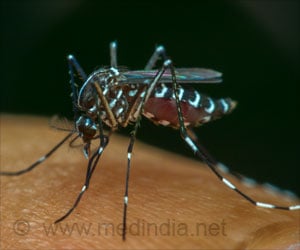Stanford University School of Medicine investigators have understood how Listeria monocytogenes, a lethal food-borne pathogen, manages to escape the intestine's defenses and causes disease.
Stanford University School of Medicine investigators have understood how Listeria monocytogenes, a lethal food-borne pathogen, manages to escape the intestine's defenses and causes disease.
This bacterial strain thrives in salty or cold environments where prissier pests might perish: cold cuts, smoked salmon, soft cheeses and many a refrigerator. Abundant in the environment, it seldom causes disease in humans - but when it does, it's deadly.Manuel Amieva, MD, PhD, assistant professor of pediatrics and of microbiology and immunology, is the senior author of a study that describes the way Listeria grabs onto molecular handles on cells in the small intestine and then switches on those cells' own uptake systems to hitch a ride inside.
The study will be published online May 13 in PLoS Pathogens. Mickey Pentecost, PhD, a recent graduate from Amieva's laboratory, is the first author.
We think of the small intestine as a long, smooth, hollow tube through which torrents of nutrient-rich food flow. But close inspection shows that the gut's inner surface lining, known as the intestinal epithelium, is anything but smooth. In fact, it's much more like the Rocky Mountains than the Great Plains. The gut's serrated character vastly increases its surface area, which in turn increases nutrient absorption.
The microscopic mountains of the intestine's rugged surface terrain are called villi. Amieva and his colleagues have previously shown that cells at the very tips of villi are particularly vulnerable to infection by Listeria. But gaining that unauthorized access is no mean feat. The cells of the intestinal epithelium are tightly stitched together by molecules on their cell surfaces that connect them to each other.
The tight junctions formed in this way effectively seal off the intestine from the microbes that course through our digestive tracts. And luckily so: Even normally benign bugs - there are trillions of them in our gut - would cause serious problems if they could squeeze through the intestinal wall and enter the bloodstream.
Advertisement
Listeria exploits these exposed spots by doing a sophisticated two-step.
Advertisement
Both E-cadherin and C-Met are typically located along the normally inaccessible sides of villus cells. This was puzzling, said Amieva. "E-cadherin and C-Met would seem to be unlikely attachment sites. Why on earth would a microbe pick such hard-to-reach sites to grab onto?"
Source-ANI
SAV










